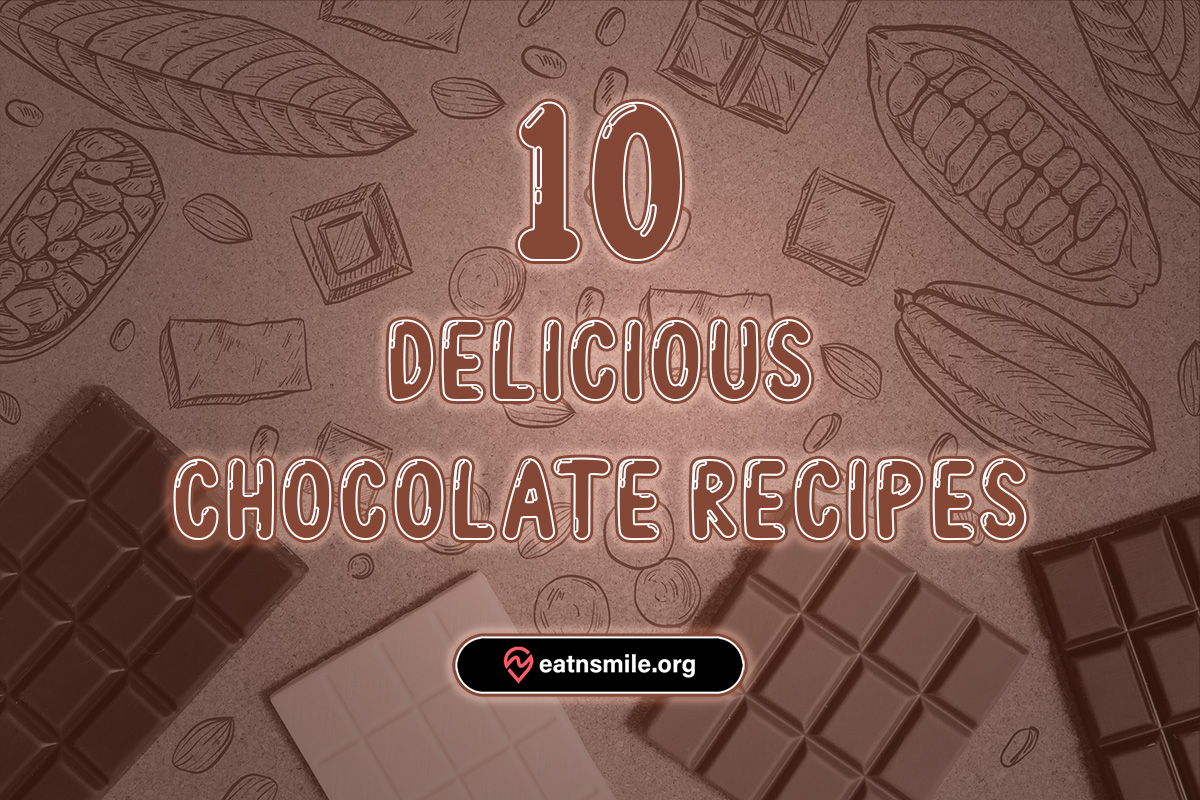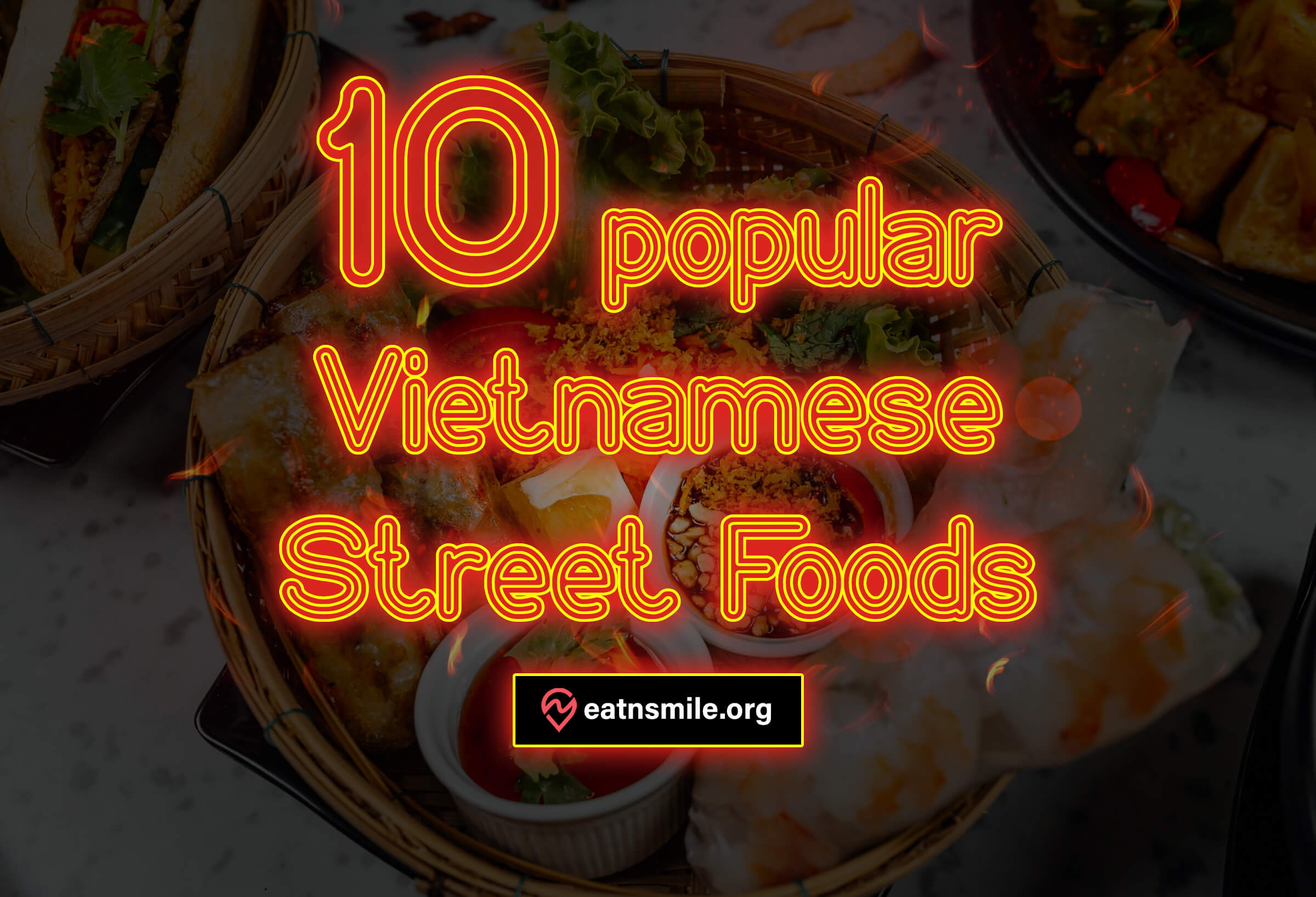
10 most popular Vietnamese Street Foods
Vietnam is a country with a rich and diverse culture, and its street food is no exception. From hearty noodle soups to flavorful grilled meats, there’s something for everyone to enjoy.
And best of all, Vietnamese street food is incredibly affordable, making it a great way to experience the local culture on a budget.
Here is our list of the 10 most popular Vietnamese street foods:
10 of the most popular Vietnamese street foods:
Phở (Vietnamese noodle soup)
When it comes to Vietnamese street foods, Phở is undoubtedly the first dish that comes to mind. This flavorful noodle soup is a national treasure, and it’s no wonder that it’s so popular.
Phở is made with a rich beef broth, rice noodles, and a variety of herbs and spices. The most common type of Phở is made with beef, but chicken Phở is also popular. Phở is typically served with bean sprouts, Thai basil, cilantro, and mint. It’s also common to add chili sauce, hoisin sauce, and fish sauce to the soup.
Phở is a hearty and satisfying meal that can be enjoyed for breakfast, lunch, or dinner. It’s also a great choice for a cold day. Whether you’re looking for a delicious and nutritious meal or a warm and comforting bowl of soup, Phở is the perfect choice.
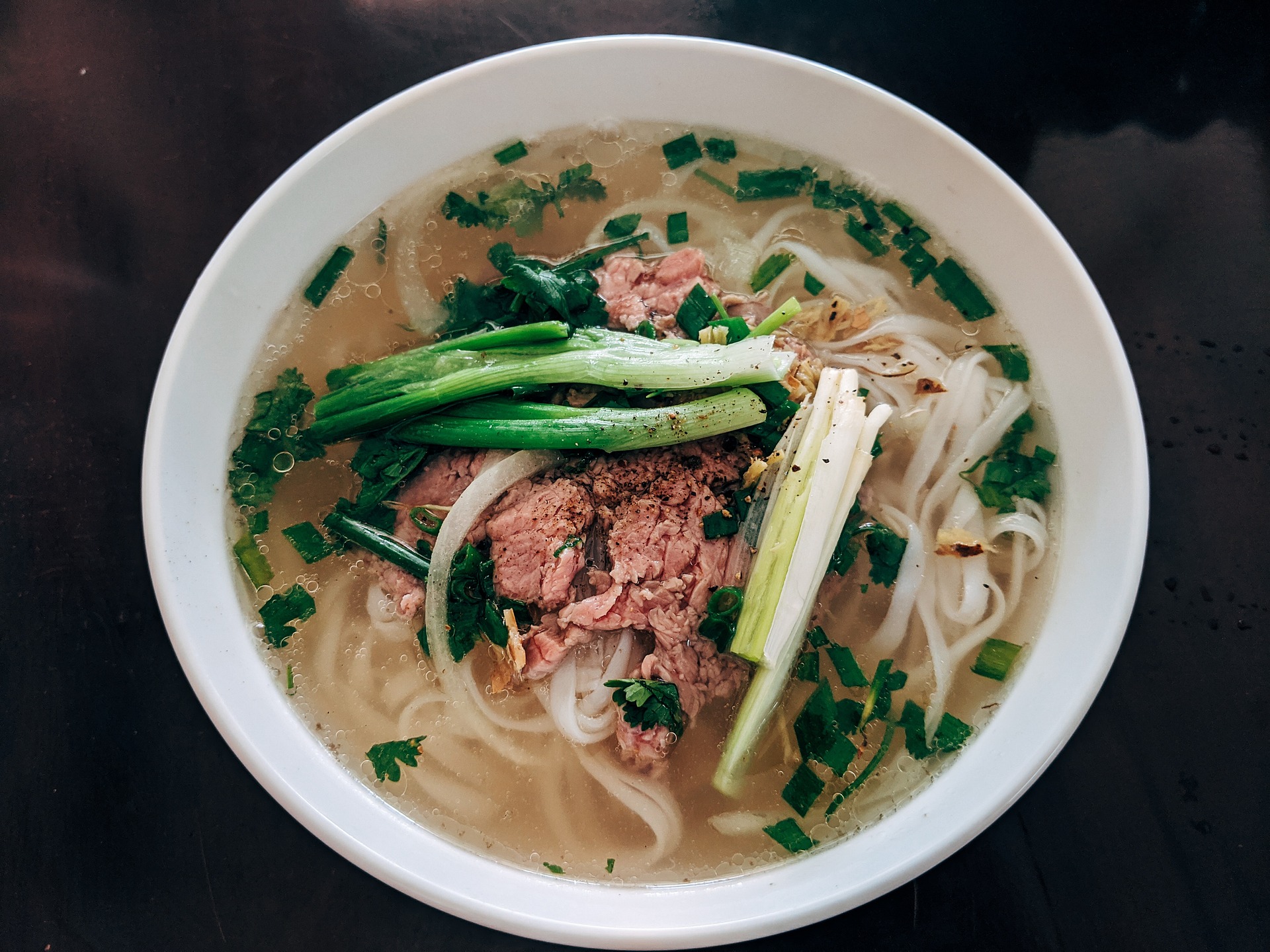
Bánh mì (Vietnamese baguette).
Bánh mì is a Vietnamese baguette sandwich that is popular street food in Vietnam. It has become increasingly popular in other parts of the world in recent years. The sandwich typically consists of a baguette filled with a variety of ingredients, including meat, pickled vegetables, herbs, and spices.
The exact origins of bánh mì are disputed, but it is generally believed to have originated in Vietnam during the French colonial period. The French introduced the baguette to Vietnam, and Vietnamese cooks began to experiment with filling it with local ingredients. The modern bánh mì sandwich emerged in the 1950s, and it quickly became a popular food throughout Vietnam (according to Wikipedia and theculturetrip.com).
Bánh mì is a versatile sandwich that can be made with a variety of ingredients. The most common fillings include pork, chicken, ham, sausage, and egg. The vegetables typically include pickled carrots, daikon, cucumber, and cilantro. The spices typically include chili peppers, garlic, and fish sauce.
Bánh mì is often served with a side of fresh herbs, such as mint, basil, and chives. It can also be served with a dipping sauce, such as hoisin sauce or chili sauce. Bánh mì is a delicious and satisfying sandwich that is a great way to experience Vietnamese cuisine.
Bánh mì is a popular Vietnamese street food for breakfast, lunch, and dinner, and it can be found in street stalls and restaurants throughout Vietnam.
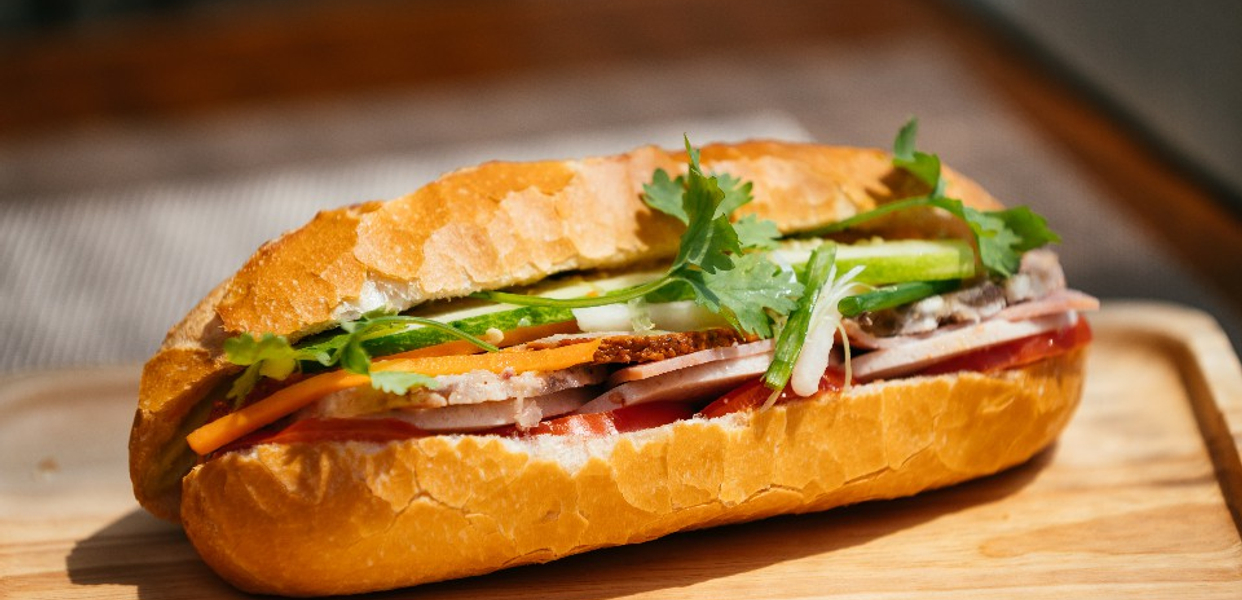
Bánh xèo (Vietnamese crepe).
Bánh xèo is a savory Vietnamese pancake made with a rice flour batter seasoned with turmeric, water, and salt. It is typically filled with shrimp, pork, and bean sprouts, and is cooked until golden brown in a hot pan. Bánh xèo is often served with a dipping sauce made with fish sauce, sugar, vinegar, and chili peppers.
The name “bánh xèo” is onomatopoeic, referring to the sizzling sound the pancake makes when it is cooking. This is a fun and interactive dish to make, as you can watch the batter sizzle and the pancake cook.
Bánh xèo is a popular street food in Vietnam, and can also be found in many restaurants. It is a delicious and satisfying dish that is perfect for a light lunch or dinner. Bánh xèo is also a great choice for a party or potluck.
Bánh xèo is a versatile dish that can be enjoyed for any meal. It is a great way to get your daily dose of vegetables and protein. The fillings can be customized to your liking, so you can always find a version that you love.
If you have never tried bánh xèo, I highly recommend it. It is a delicious and unique dish that is sure to become a new favorite.
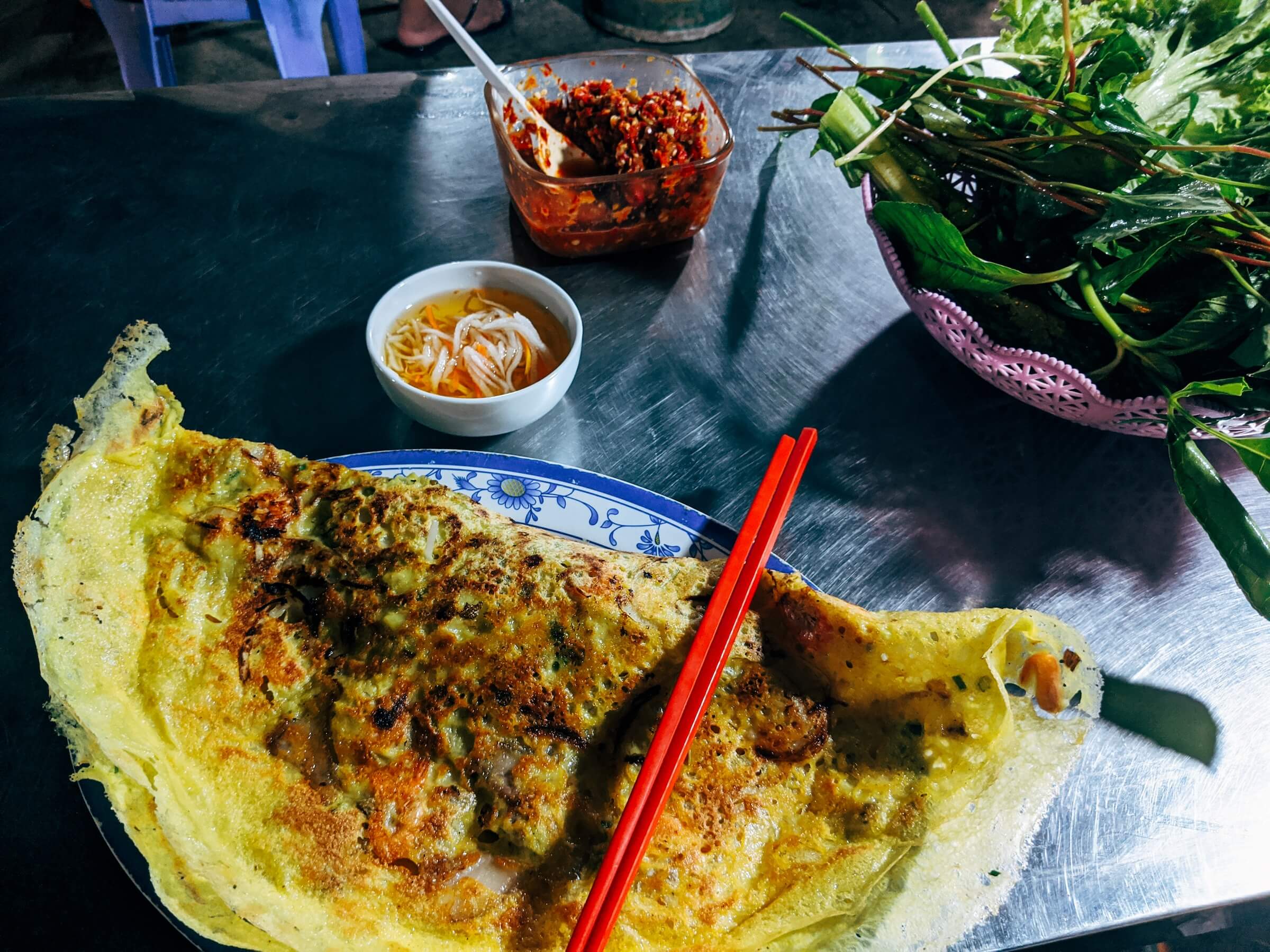
Bún chả (grilled pork and noodles).
Bún chả is a Vietnamese street food dish of grilled pork and rice noodles that originated in Hanoi, Vietnam. It is typically served with a dipping sauce made with fish sauce, sugar, garlic, and chili peppers.
To make bún chả, the pork is first marinated in a mixture of fish sauce, sugar, garlic, and chili peppers. The pork is then grilled over a hot charcoal grill until cooked through. The rice noodles are cooked in boiling water until softened. The pickled vegetables are prepared by soaking them in a mixture of vinegar, sugar, and salt. The fresh herbs are washed and chopped.
To eat bún chả, you typically start by placing some rice noodles in a bowl. Then, you add some of the grilled pork, pickled vegetables, and fresh herbs. Finally, you top it all off with a generous amount of dipping sauce. The dipping sauce is typically made with fish sauce, sugar, garlic, and chili peppers, but the exact proportions may vary by region.
Bún chả is a delicious and satisfying dish that is perfect for a casual meal. It is also a great way to experience the flavors of Vietnam. If you are ever in Vietnam, be sure to try bún chả!
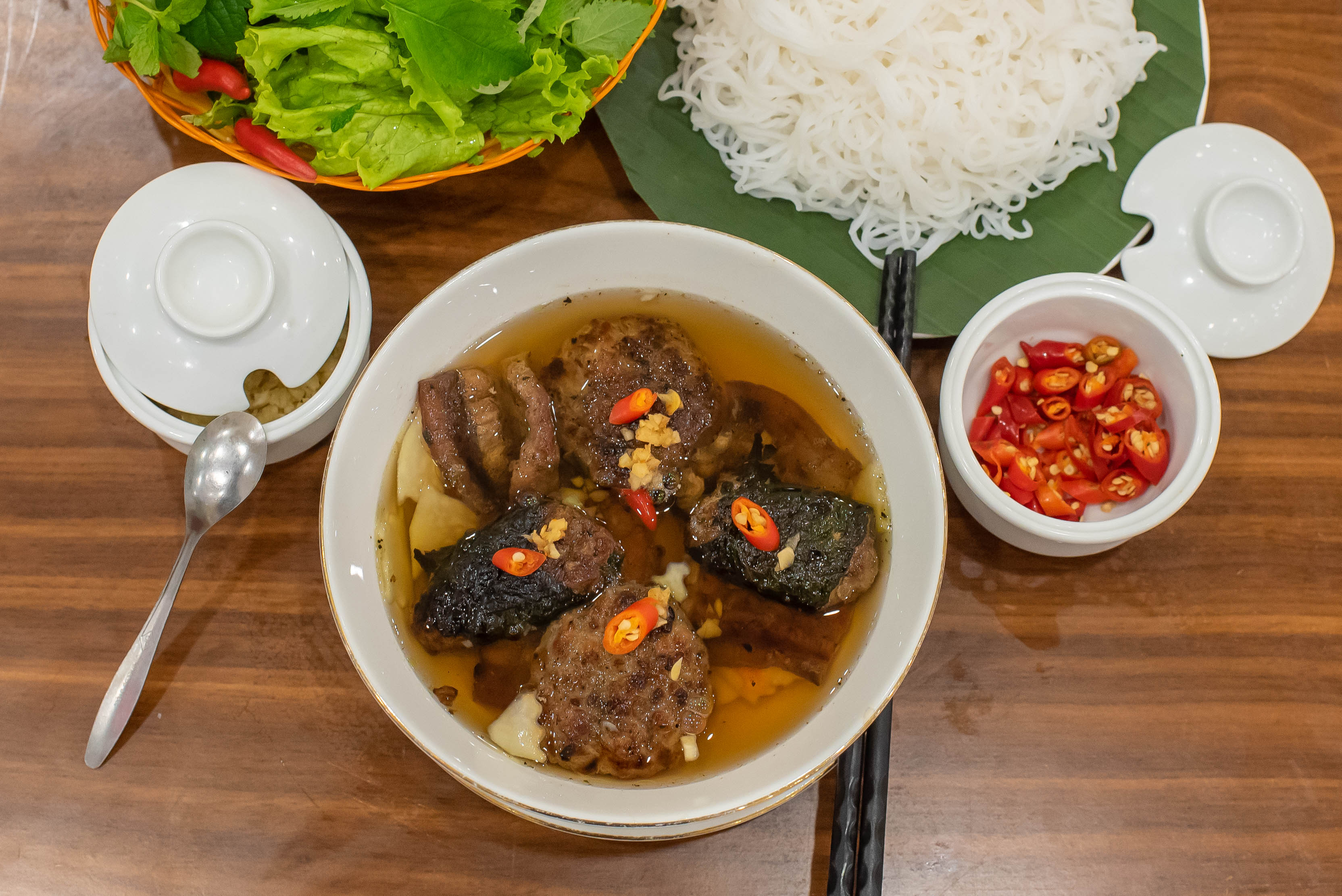
Bún bò Huế (Hue beef noodle soup).
Bún bò Huế is a popular Vietnamese rice noodle soup that originated in Huế, a city in central Vietnam. It is a hearty and flavorful dish that is made with a rich and spicy broth, thinly sliced beef, pork sausage, and pork knuckles. The noodles are thicker and cylindrical than those used in other Vietnamese noodle soups, such as Phở.
The broth is made by simmering beef bones and shanks with lemongrass, fermented shrimp paste, and sugar. Chili oil is added later to give the soup a bit of a kick. The beef is typically marinated in a mixture of fish sauce, sugar, garlic, and chili peppers before being cooked. The pork sausage is made with pork, rice, and spices. The pork knuckles are boiled until tender.
Búnn bò Huế is typically served with a variety of toppings, including lime wedges, cilantro, green onions, raw onions, chili sauce, banana blossom, red cabbage, mint, basil, perilla, sawtooth herb, and mung bean sprouts. The toppings are added to the soup to taste.
Bun bo Hue is a delicious and satisfying dish that is perfect for a cold day. It is a popular street food in Vietnam and can be found in many restaurants throughout the country. If you are ever in Huế, be sure to try this local specialty.
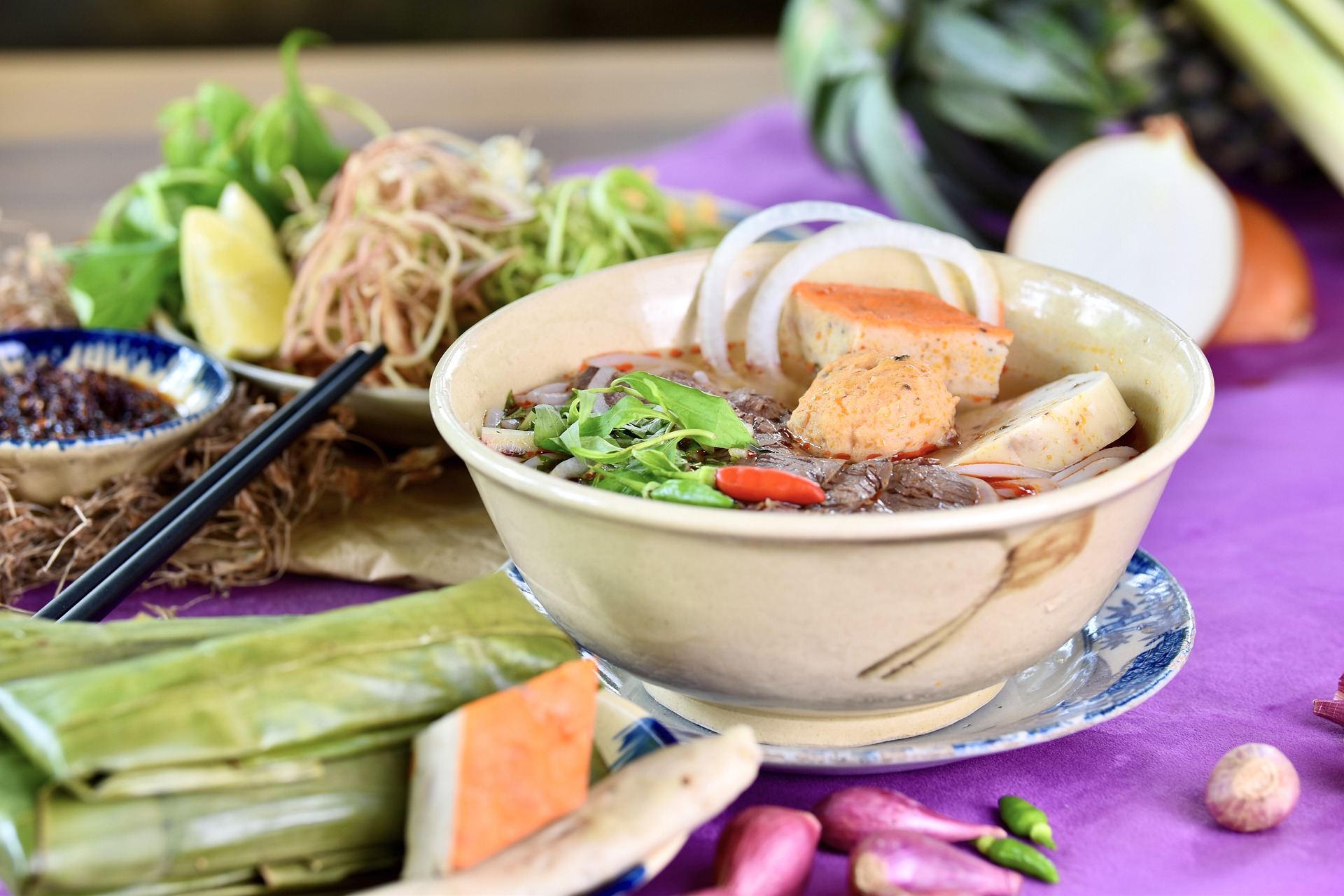
Bánh cuốn (steamed rice rolls).
Bánh cuốn is a popular Vietnamese dish made from a thin, wide sheet of steamed rice batter filled with a mixture of ground pork, wood ear mushrooms, and shallots. It is typically served with a dipping sauce made from fish sauce, water, sugar, and garlic. Bánh cuốn is a light and delicate dish that is often eaten for breakfast.
There is also a variation of bánh cuốn called bánh ướt. Bánh ướt is made with the same thin rice sheet as bánh cuốn, but it is not filled. Instead, it is served with a variety of toppings, including bean sprouts, lettuce, cucumber, basil, mint, fried shallots, onions, and chả lụa (Vietnamese pork sausage).
Bánh cuốn and bánh ướt are both delicious and popular Vietnamese street foods. They are a great way to start your day or enjoy a light lunch or dinner.
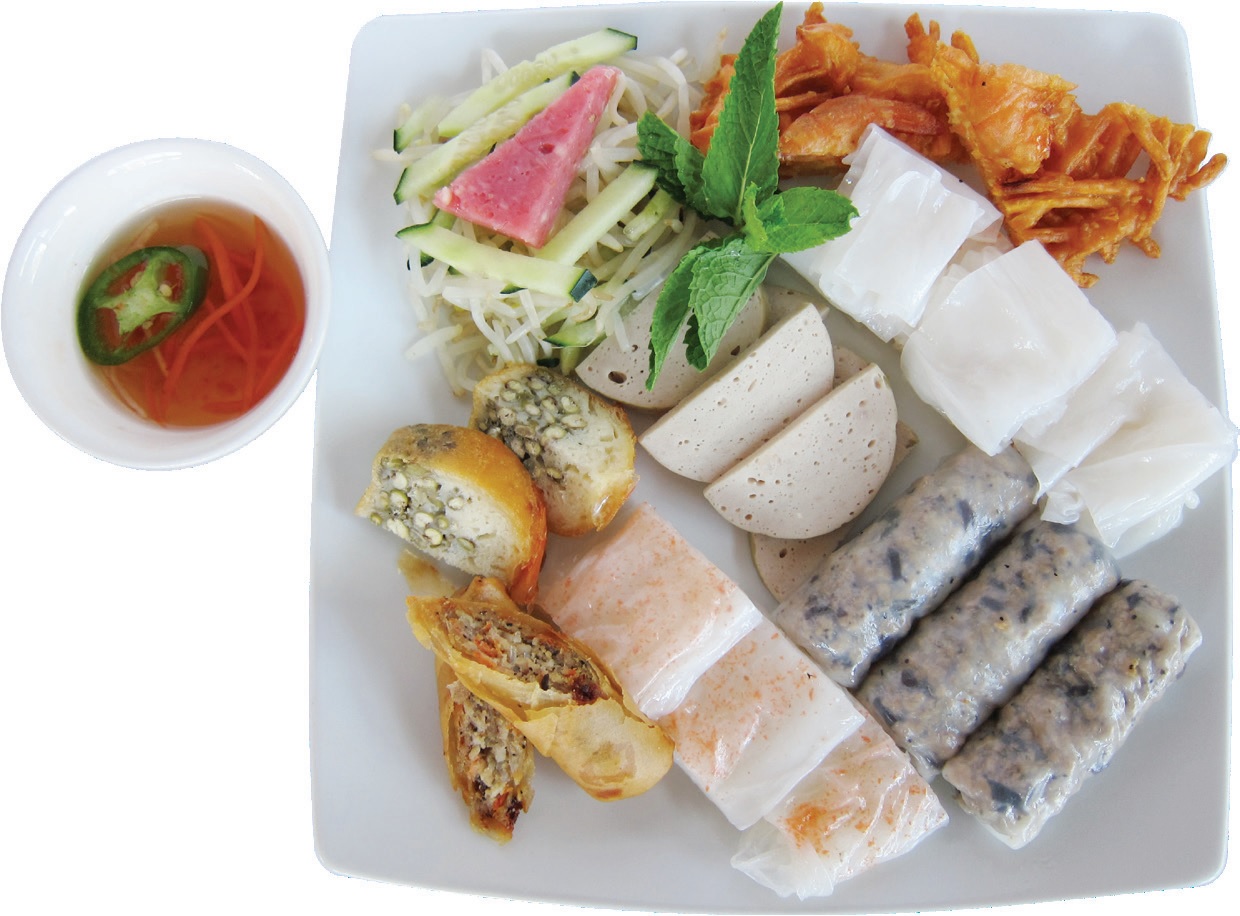
Gỏi cuốn (Vietnamese spring rolls).
Gỏi cuốn, also known as Vietnamese spring rolls, is a popular Vietnamese street food made with fresh vegetables, shrimp, and pork belly (optional), wrapped in a thin rice paper. Gỏi cuốn are typically served with a dipping sauce made from fish sauce, sugar, lime juice, and chili peppers.
Gỏi cuốn is a healthy and refreshing dish that is perfect for summer. The vegetables that are typically used in gỏi cuốn include lettuce, carrots, cucumbers, and herbs such as mint, basil, and chives.
The pork belly or shrimp in gỏi cuốn adds a bit of richness and flavor to the dish. The rice paper helps to bind all of the ingredients together and creates a light and crispy texture. Gỏi cuốn is typically served at room temperature. They can be eaten as a snack, appetizer, or light meal.
You can easily find ready-made spring rolls from street vendors, but for the best experience, roll your own. Rolling your own spring rolls is a fun and rewarding experience, and it’s a great way to learn about Vietnamese culture. If you’re not sure how to roll them, the street vendor will be happy to show you how.
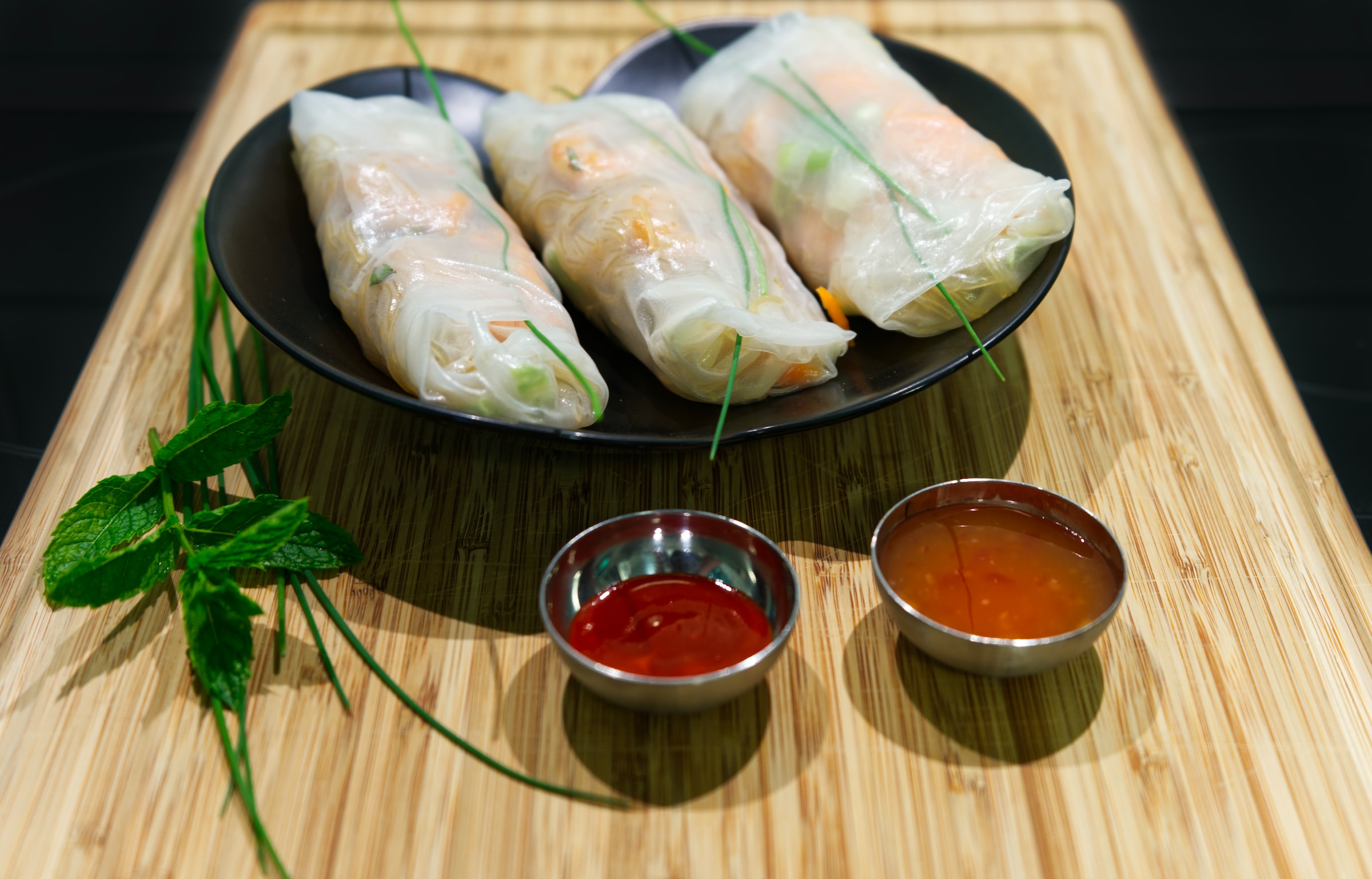
Cơm tấm (Steamed broken rice).
Cơm tấm, or steamed broken rice, is a popular street food in Vietnam. It is made with broken rice, which is cheaper and easier to cook than whole-grain rice. Broken rice is also softer than whole grain rice, which makes it easier to eat and easier to digest.
Cơm tấm is often served with a variety of toppings, including grilled pork chop, shredded pork skin, meat patty, and fried egg. The dish is also typically served with a dipping sauce made from fish sauce, water, and sugar.
Cơm tấm is a hearty and satisfying dish that is perfect for a quick and affordable meal. It is also a good source of energy, making it a popular choice for breakfast, lunch, or dinner.
Here are some of the most popular types of steamed broken rice:
- Cơm tấm sườn (Steamed broken rice with grilled pork chop)
- Cơm tấm sườn bì (Steamed broken rice with shredded pork skin)
- Cơm tấm bì chả (Steamed broken rice with meat patty)
- Cơm tấm sườn bì chả (Steamed broken rice with a combination of grilled pork chop, shredded pork skin, and meat patty)
Cơm tấm is a delicious, affordable, and easy-to-find street food in Vietnam. If you are looking for a quick and satisfying meal, be sure to try cơm tấm.
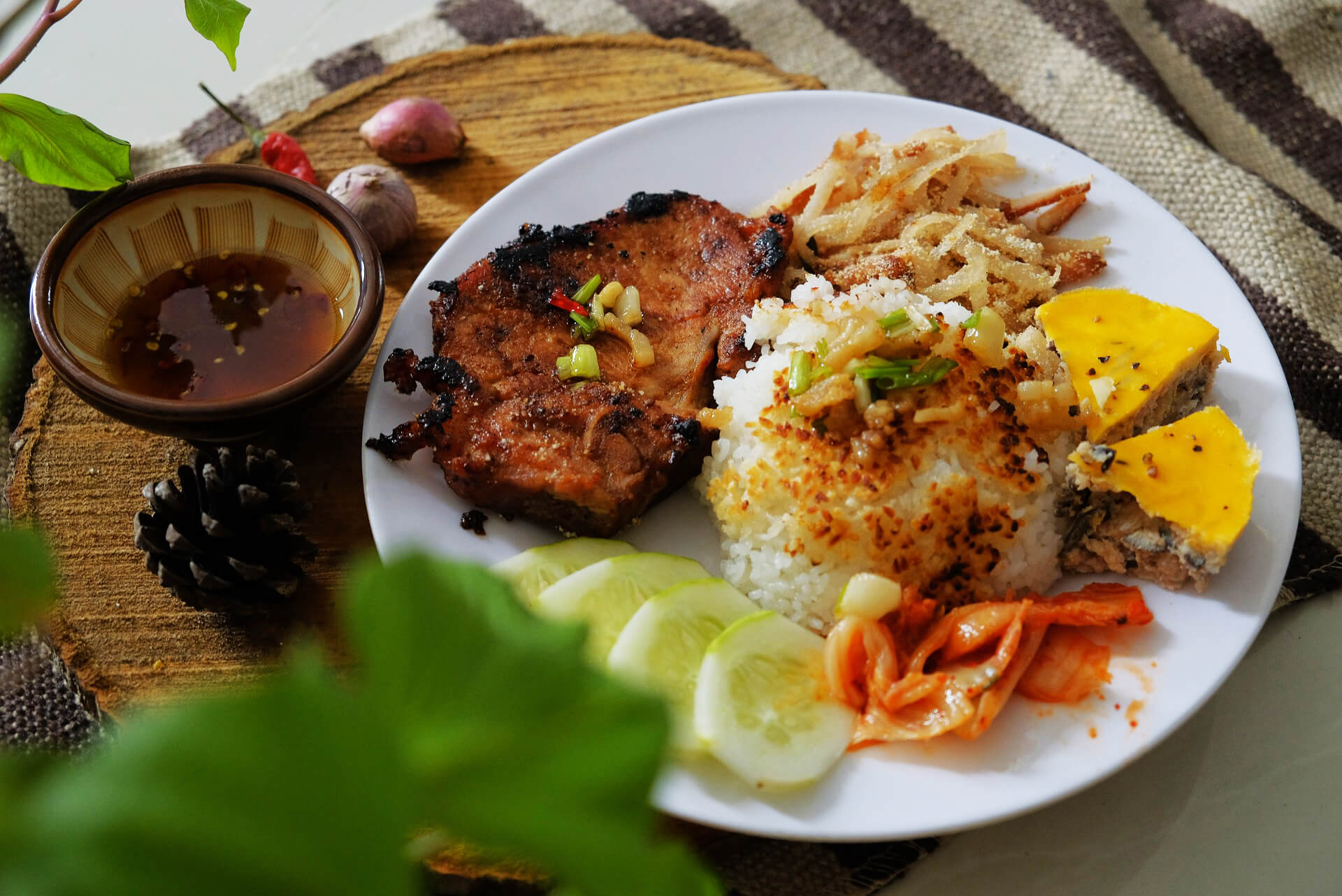
Cá viên chiên ( Vietnamese fried fish balls)
Cá viên chiên, or fried fish balls, is a popular Vietnamese street food that can be enjoyed while walking or sitting down. They are quick, cheap, and easy to share, making them a perfect snack or light meal.
Cá viên chiên sellers typically sell a variety of other fried dishes as well, such as fried beef balls, fried nuggets, fried wontons, and fried sausages.
In the early days, sellers often sold them on small food carts that could be pushed around. This was because they had to move constantly, so they needed to choose an item that was easy to prepare, small in size, quick to cook, and easily loved by many people, especially children.
Fish balls meet all of these criteria, which is why they called this Vietnamese street food: “Cá viên chiên” which literally means “fried fish balls”.
Over time, the dish has evolved to suit the tastes of consumers. Today, you can still see food carts selling fried fish balls on the street, but they are more likely to be found in fixed locations.
One of the best things about fried fish balls is that they are a great way to experience Vietnamese culture. You can see many groups of young Vietnamese people gathering every night at these fried food stalls, sharing skewers of fried food and talking happily about everything in the world.
If you have a chance to visit Vietnam, be sure to try this delicious and affordable street food.
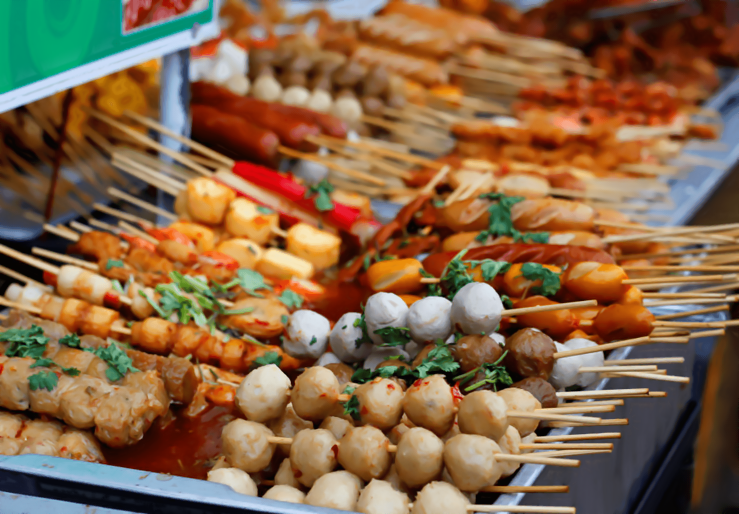
Cà Phê sữa đá (Vietnamese iced coffee with condensed milk).
Cà phê sữa đá, or Vietnamese iced coffee, is a popular drink in Vietnam that is made with strong coffee, condensed milk, and ice. It is often enjoyed in the morning or as a refreshing beverage throughout the day.
To make cà phê sữa đá, coffee is typically brewed using a drip coffee maker or a phin (a Vietnamese coffee maker). The condensed milk is then added to the coffee and stirred until it is dissolved. The coffee can be served hot or cold, but most people prefer it cold.
Cà phê sữa đá can be found in cafes and restaurants all over Vietnam. It is also a popular drink to make at home. If you are new to cà phê sữa đá, it may take some getting used to. The condensed milk can make the coffee quite sweet, but ice can balance it out.
However, it takes time for the ice to melt, which is why people often linger over their coffee. Yet, with a few tries, you will likely come to enjoy this delicious and refreshing drink.
In addition to being a delicious drink, cà phê sữa đá is also a great way to experience Vietnamese culture. In Vietnam, coffee is often seen as a social drink, and it is common to see people sitting in cafes and talking for hours.
If you are looking for a unique and authentic Vietnamese experience, cà phê sữa đá is a great option.
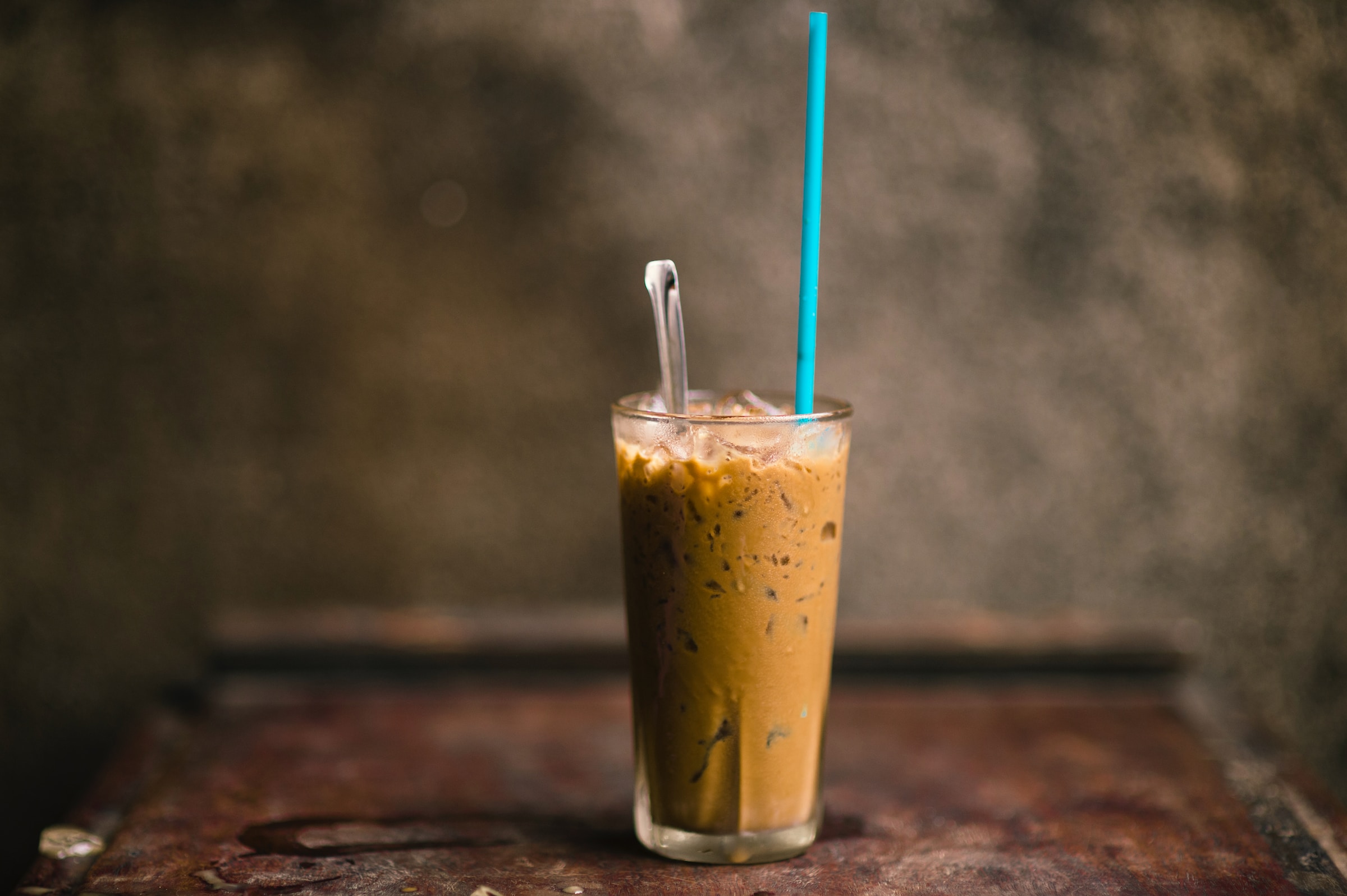
Here are a few tips for eating Vietnamese street food:
Even if you are an experienced traveler, you may need some help when trying Vietnamese street food for the first time. Here are a few tips to help you have the best experience:
- Go with a local. A local can help you find the best places to eat, avoid tourist traps, and bargain for the best prices.
- Choose a crowded restaurant. This is a good indication that the food is good and that the restaurant is clean.
- Don’t be afraid to try new things. Vietnamese cuisine is full of delicious and unique dishes. Be adventurous and try something you’ve never had before.
- Start with small portions. Vietnamese dishes are often served in large portions. If you’re not sure how much you’ll like something, start with a small portion.
- Ask about the ingredients. Many Vietnamese dishes contain ingredients that are unfamiliar to Westerners. If you have any allergies or dietary restrictions, be sure to ask about the ingredients before you order.
- Be patient. Vietnamese street food is often prepared to order. This means that it may take a few minutes longer to get your food than it would in a sit-down restaurant.
- Enjoy the experience! Eating Vietnamese street food is a great way to experience the local culture and cuisine. So relax, have fun, and try something new.
I hope these tips help you have a great time exploring Vietnamese street food!
Share your Vietnamese street foods experience on EatnSmile
Vietnam is a diverse country with a rich culture and ethnicity, from north to south. Each region has its own unique cuisine, so feel free to explore and discover the local favorites.
This list is just a starting point for your culinary journey. There are many other popular Vietnamese street foods that do not appear on this list. So, don’t be afraid to try something new!
As the saying goes, “A meal shared is a meal doubled.” Food tastes better when shared with others, and there is no better place to share your experiences than EatnSmile. In addition to contributing to a vibrant and friendly community, you can also earn rewards for your contributions.
EatnSmile also provides some tips on How to Write a remarkable Food review or Restaurant review. Your reviews are valuable resources for others, so take the time to write them.



